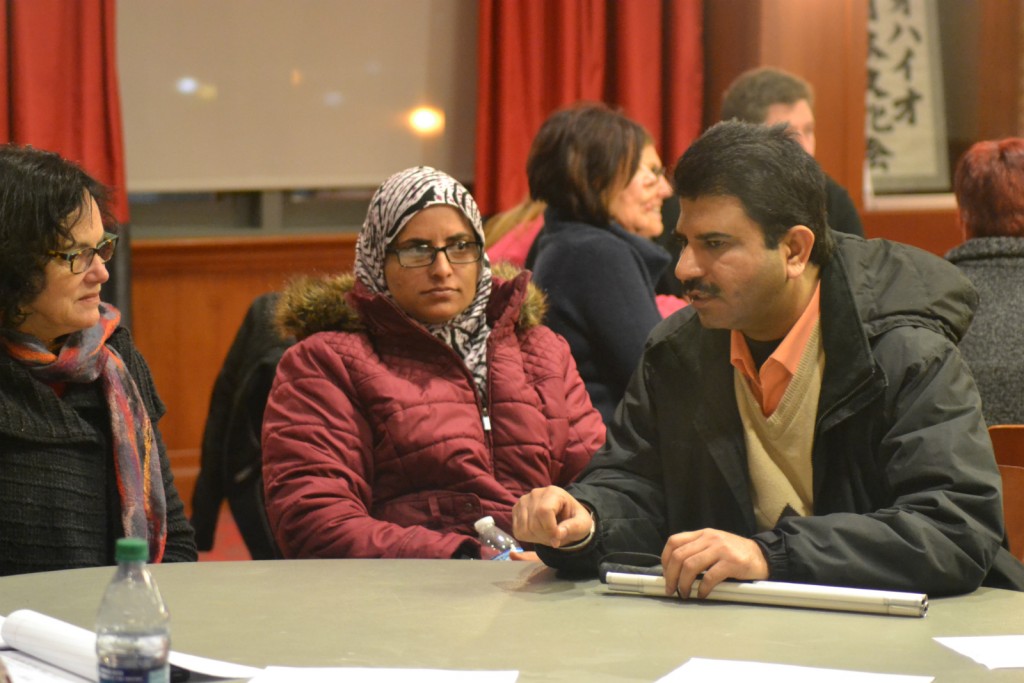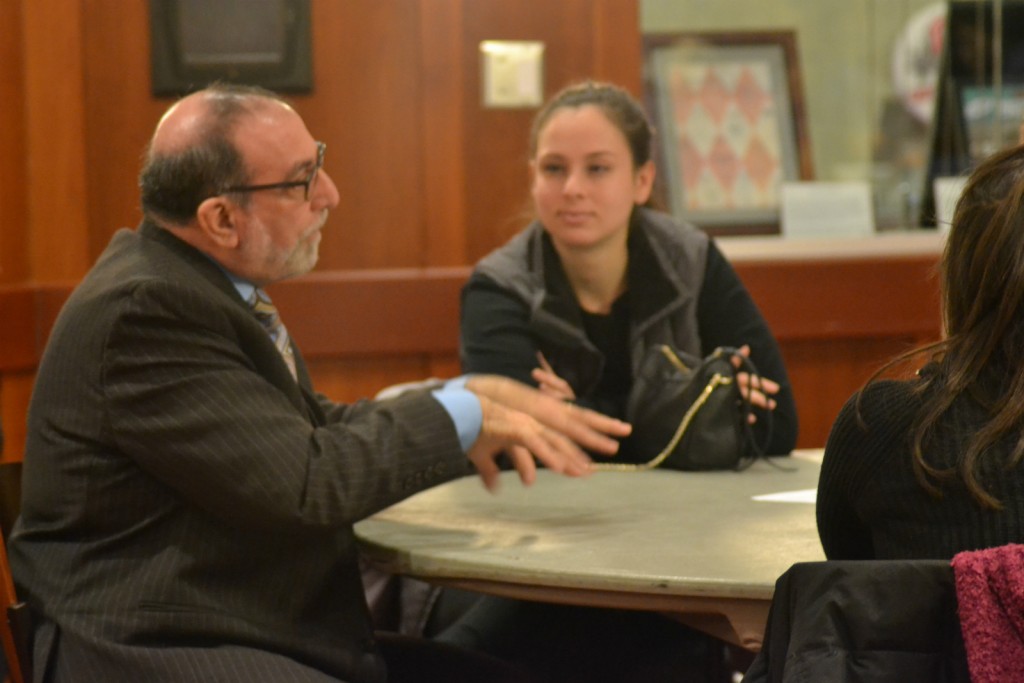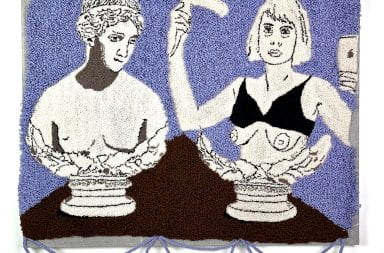
Ohio State students, administrators and visitors met during a forum held at the Ohio Union on Feb. 10, 2016 to discuss the campus climate for students with disabilities. Credit: Janaya Greene / Lantern reporter
About 11 percent of undergraduate students in the U.S. have a disability. Of these nearly 2 million students, 33 percent earn a four-year degree within 8 years, according to the National Council on Disability.
In honor of the 25 year anniversary of the passage of the Americans with Disabilities Act, campus organizations collaborated to host a forum in which community members with disabilities and university administrators discussed ways to improve the experience of students with disabilities at OSU.
The event, which took place in the Ohio Union Tradition Room on Wednesday, is part of a yearlong exploration of the theme “Claiming our Space in the Ohio State Mosaic,” a collaborative effort organized by OSU’s 25th Anniversary ADA Initiative and the No Place for Hate Commision.
“We want to give an authentic space for students (with disabilities) to have a voice and to be able to say from their hearts what their experiences are, what we are doing well and what they feel that they need,” said Katherine Betts, chair of the 25th Anniversary ADA Initiative. “I personally question, outside of Disability Support Services and Disability Studies, how often with intentionality do we think about how we’re engaging students with disabilities and if they are getting a similar experience to our other students. I think it’s important to create a space where those questions can be answered.”
Among administrators present were Javaune Adams-Gaston, vice president for the Office of Student Life; Sharon Davies, vice provost for diversity and inclusion; Scott Lissner, ADA coordinator with the Office of Diversity and Inclusion; and Adam Crawford, counselor with the Office of Student Life’s Disability Services. Staff from the Office of Diversity Services at Wright State University, one of the nation’s top disability-friendly schools, according to College Success for Students with Physical Disabilities by Chris Tiedemann, were also present to share the services that they provide to students with disabilities.
Liz Litzinger, a third-year in psychology with a minor in education and disability studies, volunteers with OSU’s Transition Options in Postsecondary Settings, a program that helps students with disabilities continue through college and live independently. Litzinger came to the event as a social coach for students in the program.
“The union itself is a 5-year-old building that has the highest technology with big doors and signage for people that are deaf … it has all the nicest facilities for people with disabilities, but there are some buildings on campus that don’t accommodate as well, especially some of the older buildings since the disability movement is a more recent thing,” Litzinger said. “A lot of the accessibility for older buildings are in the back so it’s kind of discriminating … that can subconsciously affect somebody’s mindset, so I think that having accessibility that’s all in the front would prove no discrimination amongst able-bodied versus disabled-bodied people.”

Scott Lissner, ADA coordinator with the Office of Diversity and Inclusion, discusses campus climate for students with disabilities during a forum held at the Ohio Union on Feb. 10, 2016. Credit: Janaya Greene / Lantern reporter
One of the larger conversations presented in the forum was a need for OSU administration to foster more opportunities for students with disabilities to create strong-knit communities through mentorship programs, programming that focuses on eliminating the stigma of invisible illnesses, tours specifically designated for students in need of disability services and more programming directed at integrating students with and without disabilities.
Paul Velasquez, a fourth-year in sexuality studies with a minor in disability studies who founded Abilities, an organization that connects students with and without disabilities, suggested that the Undergraduate Student Government create a position dedicated to improving the Buckeye experience for students with disabilities.
Andrew Sydlik, a graduate student in disability studies and English, told the forum that equality for those with disabilities is a political issue and should move beyond tolerance, citing an incident in which students took photos of a blind student on campus who exercised at the gym and posted the photos on social media to make a mockery of him. Sydlik said that the university did not address the incident publicly.
“In order to accurately measure the climate of students with disabilities, there needs to be a climate survey that taps into students’ experiences … what’s clear from the conversations tonight is that there needs to be more effort to establish to a clear sense of community, leadership development and belonging of students with disabilities in the larger university,” Betts said. “Pre-ADA the (postsecondary enrollment) numbers were probably even lower. But even with ADA there are still some serious barriers. Same thing with employment. The numbers are still dismally low. As a higher education institution we have to acknowledge that there still are some systematic and institutional barriers.”
Betts, who is legally blind, said the ADA means a lot to her personally because it has allowed her to have a job, unlike other people with disabilities who could not get employment before the ADA was passed. She also said that although she is fortunate to be employed at an institution like OSU, her journey has not been easy.
“We heard a lot of survival stories in the room tonight, not necessarily people thriving the way we want to see our Buckeyes thrive,” Betts said. “That clearly says that there’s some things we need to put in place.”


